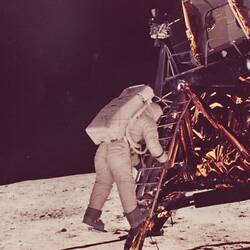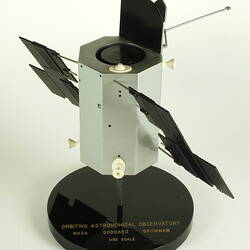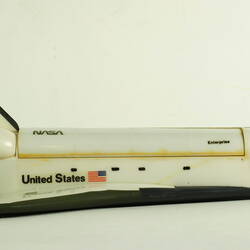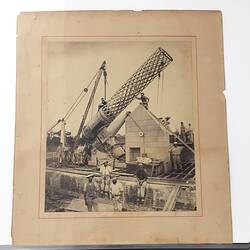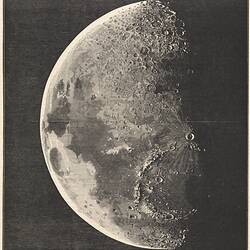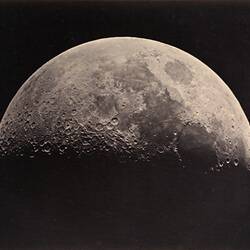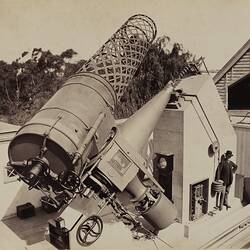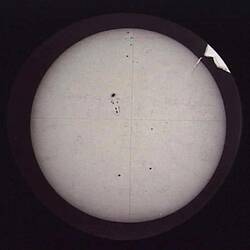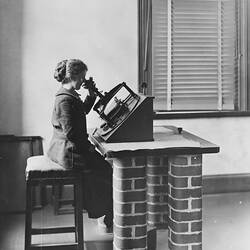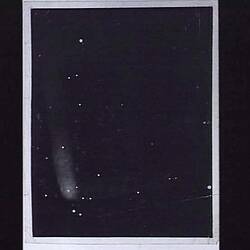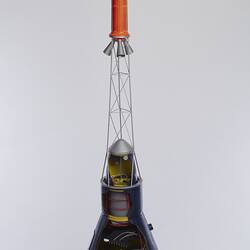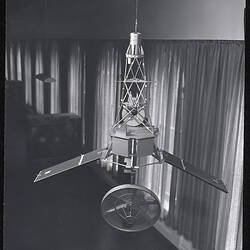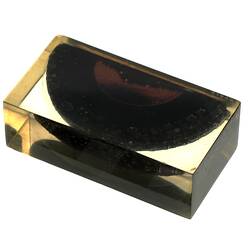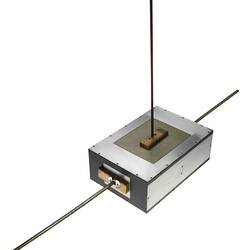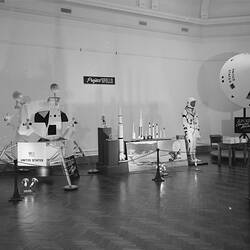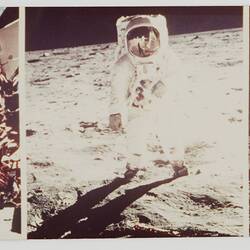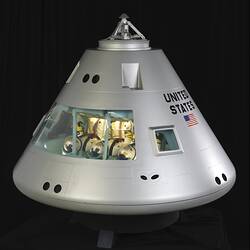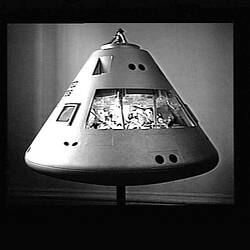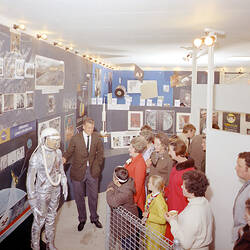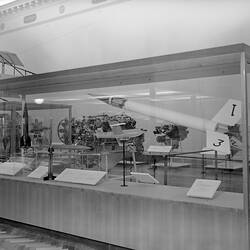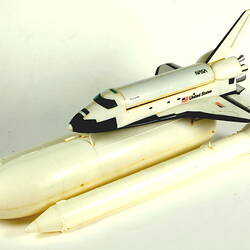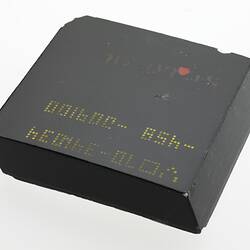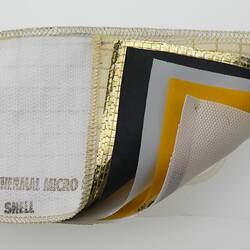Innovation and The Space Collection at Museums Victoria
Space has long captivated the world, whether that be the dream of travelling into space, the desire to know more about the stars and planets, or aspirations of using space for communication.
From material samples and photographs to scale models, this selection of material from Museums Victoria's historic space collection offers a window into human ambitions to interact with space and the evolution of innovations in technology that have enabled this.
In this collection we can see the growing ambitions of different space missions - from sending humans into space to putting men on the moon.
This material illustrates how space travel design changed, including how it became more sustainable - from single use space vehicles, such as the Apollo space modules in the 1960s-70s, to craft that could be used on multiple expeditions, such as the Space Shuttle orbiters which flew between 1981-2011.
The evolution in satellites and rocket propulsion was important in the development of human space travel, as well as for the achievement of their own objectives. This selection of material highlights the diversity of satellites - their design, their purpose, as well as the satellite developers themselves.
This collection draws attention to the fact that voyages into space by both spacecraft and satellites have provided immense opportunities for research projects on a wide variety of scientific subject matters, including testing the very technology that enabled this travel.
We are also reminded that endeavours to capture images of, and data about, the stars and planets from space have an evocative connection to age-old practices of mapping the heavens from earth. This includes the astronomical photography and star plotting undertaken by the Great Melbourne Telescope at the Melbourne Observatory in South Yarra, in the late 19th and early 20th Century.
More Information
-
Keywords
-
Authors
-
Article types



